Вы здесь
History of Berel burial mounds.
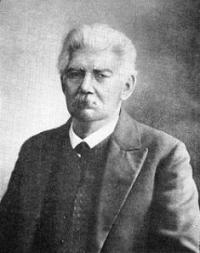
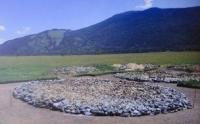
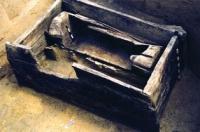

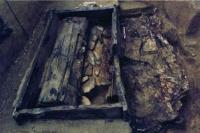
Excursions to Bukhtarma reservoir.
“Ancient aphorisms outlived centuries. Modern aphorisms can barеly survive from book to book”
Ljupka Cvetanova.
Open spaces in East Kazakhstan.
The big Berel burial mounds was surveyed by the academician V. V. Radlov in 1865 of Exact fixing at excavation was not made. Therefore so far there was no opportunity to make complete idea of this important monument in the archaeological relation neither on archival materials, nor according to the data which are available in the press.
In 1959 I conducted examination of the Big Berel burial mound. The expedition was organized by the Leningrad office of Institute of archeology of Academy of Sciences of the USSR at the initiative of S. I. Rudenko.
It was supposed to collect materials, documentation a burial design, to take wood samples for radio of carbon and dendrology researches, and also if circumstances are favorable, to fill up a collection of Berel antiquities with new material.
The burial ground to which the Big Berel barrow belongs consists of one and a half tens stone embankments located three groups on the plateau towering on 25 meters over an inundated terrace of the right river bank of Bukhtarma in 6 km river falling into it Belay Berel is lower (Kazakhstan, East-Kazakhstan, Katon-Karagaysky district).
Climatic conditions - cold winters, late spring and early autumn frosts, purity of air and abundance of moisture favor to formation of permafrost under big stone embankments here. The big barrow by the time of excavation of 1959 represented a stone ring shaft 6 - 7 meters wide, 2 meters high and with an external diameter about 30 meters.
The research of this shaft showed that the barrow embankment originally had 20 m in the diameter and about 7 m of height. The excavation of a sepulchral hole brought to the continent filled up a collection of Berel antiquities with a quantity of finds (fragments of a larch sarcophagus, bars from a funeral part, birch bark scraps were found), and also allowed to obtain the new data concerning a burial design which can be imagined with sufficient completeness and accuracy now.
On the platform prepared at the region of the plateau the rectangular sepulchral hole of 6 x 7 m in size focused by a long axis on the line the North-South and 5,5 m in depth was dug. In its southern parts also rectangular deepening 5 x 2,5 m in the plan, about 1 m in depth, focused by a long axis on the line the West-East was made.
The bottom of this deepening appeared at such level where water already strongly acted from the soil, and the sandy continental clay impregnated with moisture gained character of floating. It is very probable that edges of deepening began to fall down already when the hole only still was prepared for burial.
This circumstance could define, and most likely defined, some lines of a design of a funeral construction. First of all in deepening the grave from the thick deciduous bars laid on two one on another along long walls and strengthened by the same, but shorter bars along the short parties was arranged.
Such grave arranged in a hole which walls became swollen could not be blocked poles and logs, put directly on bars or on soil, - inevitably had to crush also walls of the camera and edge of a hole and to fall to a sarcophagus roof.
Was to put also overlapping on the thick logs put without any additional strengthening insufficiently. Soil did not allow to be limited to such design, and in a grave on its corners low columns which served as a reliable support for the beams supporting overlapping were laid out from flat stones of square shape.
In order that the earth did not get into the camera, overlapping from above was laid by birch bark. Thanks to a research of 1959 also material which allows to make the correct general idea about a sarcophagus coffin design is built.
From a half of a thick deciduous tree all lower part of a sarcophagus was hollowed. Then its boards constructed boards. The sarcophagus was fitted by birch bark and decorated with bronze figures of mythical birds.
Concerning the device of a northern part of a grave in which horses were buried number 16, nothing additional to fantastic in V. V. Radlov reports, supplementary examination of 1959 gave. For radio of the carbon analysis wood samples from the top horizons of filling of a sepulchral hole where the ancient tree sprouted roots of V. V. Radlov's excavation which grew later of trees, and from the lower horizon where roots of trees did not get are brought to the Leningrad office of Institute of archeology.
Also samples of a burned ancient tree are collected. For the analysis dendrology from the western and east slopes of the valley and with the plateau on which the Berelsky burial ground is located is more whole, cross cuts of eight larches are taken.
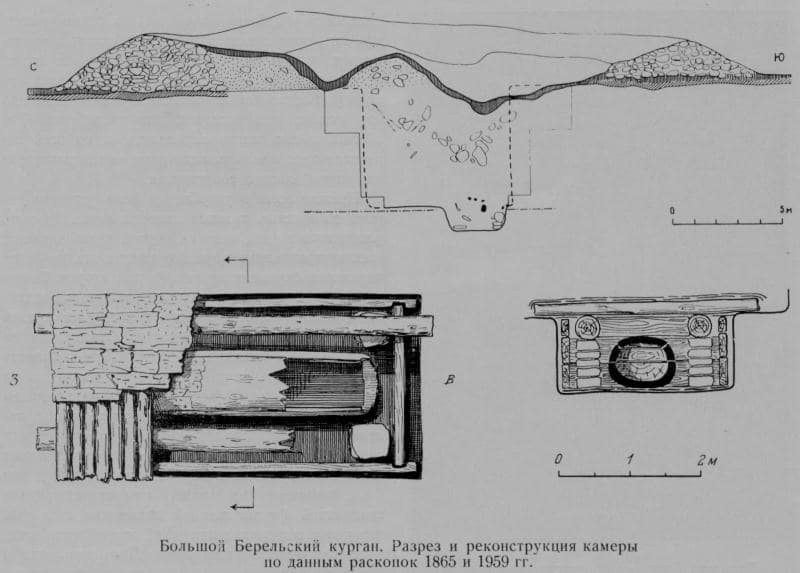
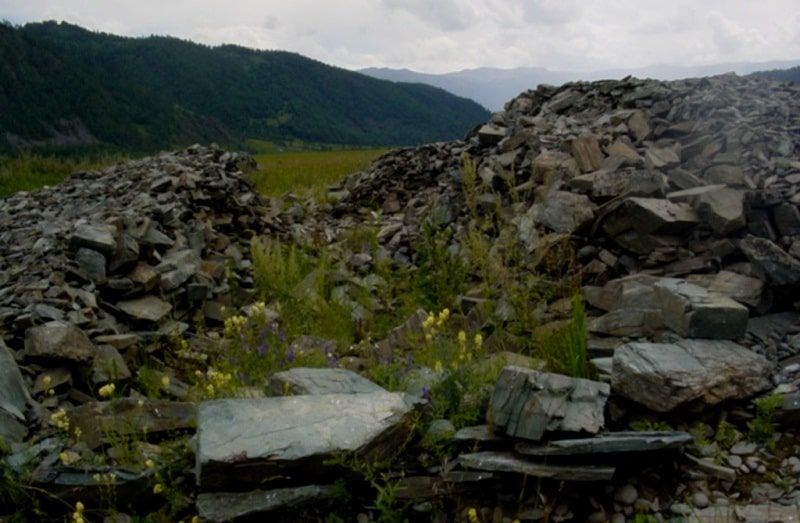
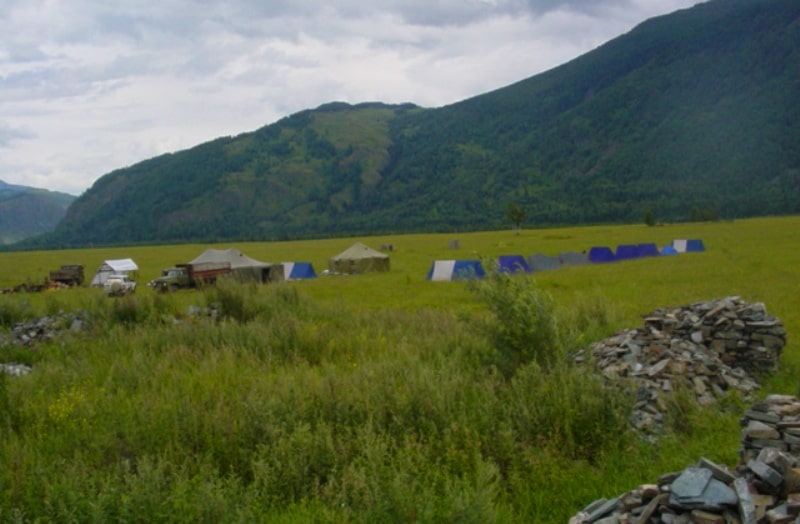
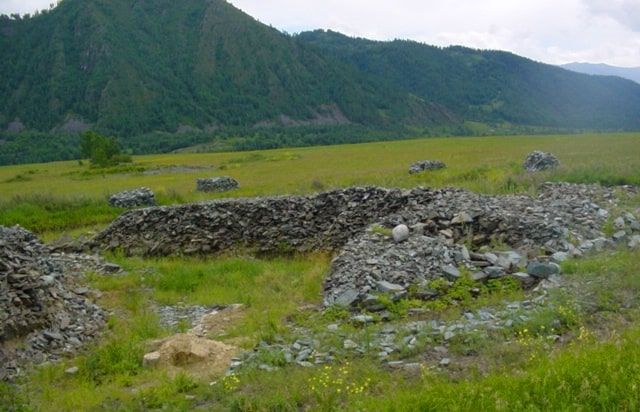
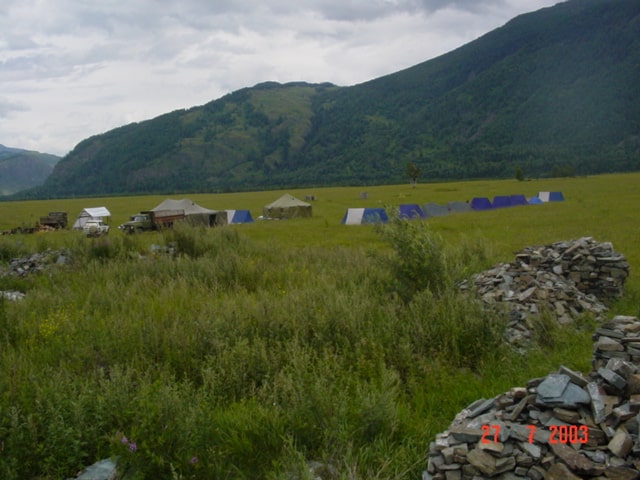
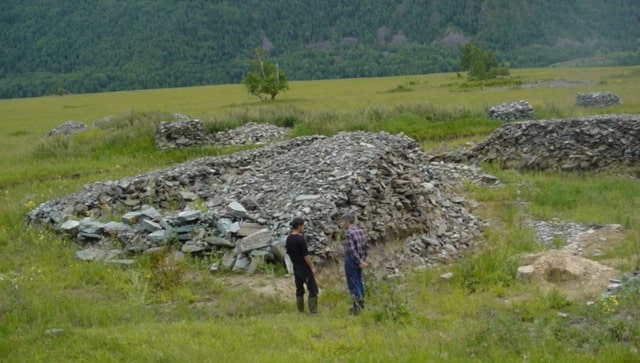
Authority:
S. S. Sorokin. "Supplementary examination of the Big Berel barrow". SGE. Issue XXIII. <http://kronk.spb.ru/library/sge.htm> L.: 1962. Page 70 - 72. LO Academy of Sciences of the USSR news Agency archive; the album of drawings which is stored in Museum of Anthropology and Ethnography of Academy of Sciences of the USSR; the report of the Archaeological commission for 1865 of W. Radloff. Aus Sibirien, t. II, Leipzig, 1884, p. 110, сл.; A. Zakharov. Materials on the Archaeology of Siberia (Dr. of V.V. Radloff Excavations in the Berel Steppe), ESA, III, Helsinki, 1928, p. 132 - 140.
Photos by
Alexander Petrov.







